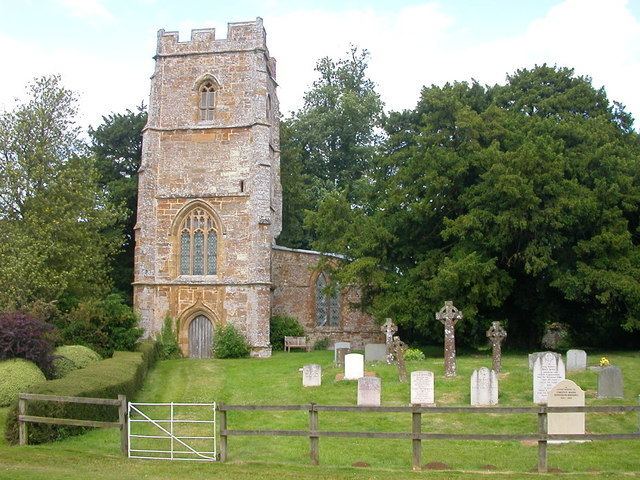Population 57 (2001 census) Civil parish Edgcote | OS grid reference SP5047 Sovereign state United Kingdom Local time Saturday 8:20 AM | |
 | ||
Weather 10°C, Wind S at 11 km/h, 95% Humidity | ||
Edgcote is a village and civil parish on the River Cherwell in south-west Northamptonshire. The parish is bounded by the river to the north and by one of its tributaries to the east. The village is about 5.5 miles (9 km) north-east of Banbury in neighbouring Oxfordshire, and the south-western boundary of the parish forms part of the county boundary. The population of the village remained less than 100 at the 2011 census and is included in the civil parish of Thorpe Mandeville.
Contents
Map of Edgcote, Banbury, UK
Edgcote House
Edgcote House is an 18th-century country house of two storeys plus a basement and a nine bay frontage. It is built of local ironstone with dressings of fine grey stone. Features include a carved mahogany staircase, and a drawing room decorated in a Chinese style. It is a Grade I listed building.
In 1543 the Edgcote estate, which had previously belonged to Anne of Cleves, was bought from the Crown by William Chauncy, MP for Northamptonshire and High Sheriff of Northamptonshire for 1579. By 1742 it had descended to Richard Chauncy, a London merchant, who commissioned the architect William Jones to build the present house in 1747–52 to replace a previous building. His son William Henry Chauncy caused the village of Edgcote to be resited to improve his view sometime before 1788. The estate then passed to his unmarried sister Anna Maria Chauncy and from her to Thomas Carter, Richard Chauncy’s great-nephew, and from him to a distant cousin, Julia Frances Aubrey, who was married to William Cartwright. They moved in in 1847 and the Cartwrights remained in possession until 1926, when they were obliged to sell it to the Courage family. It has since been bought by businessman David Allen.
The 1,700-acre (690 ha) park was laid out in the 18th century and features a lake fed by the River Cherwell and the remains of a Roman villa. The house is heated by heat energy extracted from the lake.
BBC Television used the house in its 1995 television adaptation of Jane Austen's Pride and Prejudice. The estate may be adversely affected by the proposed HS2 high speed railway line.
Parish church
The oldest parts of the Church of England parish church of St. James are the 13th century south doorway and three-bay south arcade. Inside the church is a series of monuments to the Chauncey family. The oldest are to Toby Chauncey (died 1579) and William Chauncey (died 1585). They are followed by four monuments to 17th and 18th century members of the family carved by the Flemish sculptor John Michael Rysbrack.
St. James' has a ring of four bells plus a sanctus bell. The sanctus bell was cast in about 1500 by an unidentified bell-founder. Bartholomew Atton of Buckingham cast the oldest bell in the ring in 1592. His successor Robert Atton cast the tenor bell in 1623. Henry I Bagley of Chacombe cast the third bell in 1660 and the treble bell in 1668. The ring is currently unringable.
St. James' parish is a member of the Benefice of Culworth with Sulgrave and Thorpe Mandeville and Chipping Warden with Edgcote and Moreton Pinkney.
The Vicarage south of the church is a Georgian house of five bays.
